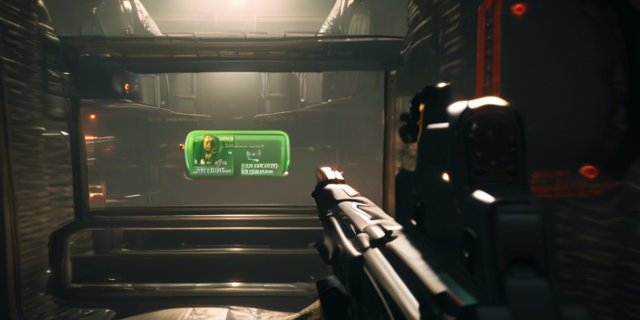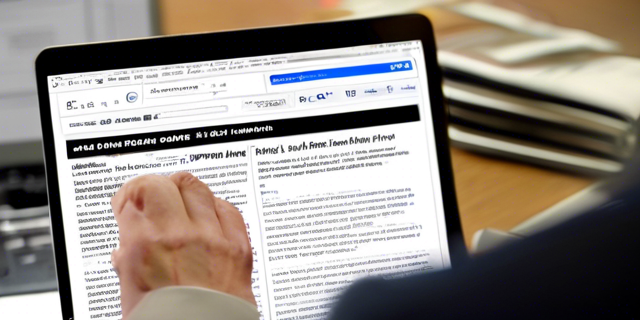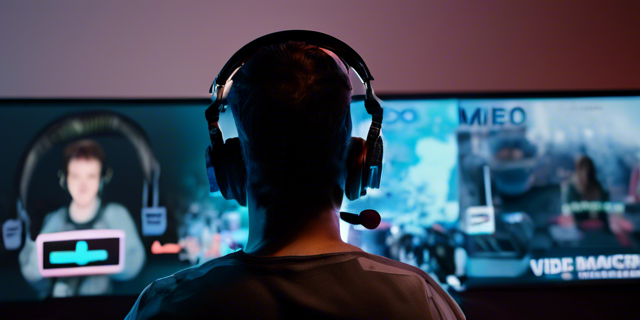Creating a standout game is just the starting line in the competitive realm of game development. The real challenge is making sure your game gets noticed–something simple to understand but difficult to achieve. This is where strategic PR tactics come into play. Effective Game PR can build excitement, secure media coverage, and draw players in. In this blog, we’ll dive into key PR strategies for game developers, helping your title shine brightly in a crowded market.
Why PR Matters for Game Developers
Public Relations (PR) is more than just a buzzword—it's a crucial component of a successful game launch. PR helps build awareness, ensuring that even the most innovative game reaches potential players, influencers, and media outlets. It creates buzz, generating excitement and anticipation around your game, which is essential for standing out. PR also builds credibility by securing media coverage and endorsements from trusted sources, making your game more appealing to sceptical audiences. Additionally, effective PR strategies foster community engagement, encouraging player interaction and loyalty, which are vital for long-term success.
In short, PR is essential for getting your game noticed, talked about, and eventually played.

Key Benefits of Game PR
Engaging in game PR offers a ton of benefits that significantly impact your game's success. Here are some of the key advantages:
- Increased Visibility: Effective game PR strategies help your game stand out in a crowded market. By securing media coverage and engaging with influencers, you increase your game's visibility to a wider audience, attracting more potential players.
- Enhanced Credibility: Positive media coverage and endorsements from respected influencers can lend credibility to your game. When trusted sources praise your game, it boosts its reputation and can lead to increased interest and trust from potential players.
- Greater Media Coverage: Well-executed PR efforts can lead to extensive media coverage across various platforms, including gaming websites, blogs, podcasts, and social media. This broad exposure helps create awesome buzz that keeps your game exposed to the public eye.
- Stronger Community Engagement: PR helps foster a connection between your game and its audience. By engaging with your player community through social media, forums, and events, you build a loyal fan base that can drive word-of-mouth marketing and long-term player retention.
- Improved Launch Success: A well-planned PR campaign can significantly enhance the success of your game's launch. By building anticipation and excitement before release, you can drive pre-orders, generate early reviews, and ensure a strong debut.
- Increased Sales and Downloads: As your game's visibility and credibility grow through PR, you are likely to see an increase in sales and downloads. Effective PR strategies can create a surge of interest that translates into tangible results for your game.
Understanding Your Target Audience
A successful PR campaign begins with a deep understanding of your target audience. Identify who your potential players are by considering factors like age, gender, location, and gaming preferences. Knowing your audience allows you to tailor your messaging and outreach efforts to resonate with those most likely to be interested in your game.
- Demographics: This includes basic information like age, gender, income level, education, and location. Knowing these details helps you establish an overview of who your players will be.
- Psychographics: This element delves into your audience’s interests, values, lifestyles, and gaming habits. For example, do they prefer mobile games or PC games? Are they casual gamers or hardcore enthusiasts?
- Behavioural Data: This looks at how your audience interacts with games. What types of games do they play? How much time do they spend gaming? Understanding their behaviour helps you craft messages that appeal to their gaming habits.
Crafting a Compelling Story
Every game has a unique story, and it’s your job to tell it in a way that captivates both the media and players. Whether it’s the inspiration behind the game, the challenges you faced during development, or the unique features that set your game apart, a compelling story makes your game memorable. This narrative will be the cornerstone of your PR efforts.
- Identify Key Elements: What inspired the creation of your game? Did you face any significant challenges during development? What unique features or gameplay mechanics does your game offer?
- Develop a Narrative: Weave these elements into a cohesive story. For instance, you might share how a personal experience inspired your game's storyline or how innovative gameplay mechanics were developed.
- Highlight Emotional Connections: Stories that evoke emotions are more memorable. Share moments of triumph, challenges overcome, or player testimonials that reflect the impact of your game.
Developing a Press Kit
A comprehensive press kit is a crucial tool for gaining media attention. It provides journalists and influencers with all the information they need to write about your game. Your press kit should include:
- Game Overview: This should be a brief description of your game, including its genre, features, and storyline. Make it engaging and informative.
- Developer Bio: Include information about your development team, their backgrounds, and any previous successful projects.
- Screenshots and Videos: What are words without complimentary videos and graphics? High-quality images and gameplay videos are essential. These visuals help journalists and influencers see what your game is about and make their coverage more engaging.
- Press Releases: These should be official announcements about your game’s milestones, launch dates, and updates. Keep them clear and concise.
- Contact Information: Provide details on how journalists can reach you for more information or interviews. Make it easy for them to get in touch.

Writing Effective Press Releases
Press releases are essential for announcing major milestones, such as game launches, updates, or partnerships. A well-crafted press release should be concise, engaging, and newsworthy. Here’s how to structure a compelling press release:
- Headline: Grab attention with a catchy, witty, but most importantly informative headline. It should give a quick idea of what the press release is about.
- Introduction: Summarise the key points of your announcement in the first paragraph. This should include the who, what, when, where, and why of your news.
- Body: Provide detailed information about the news. Include quotes from key team members to add a personal touch and credibility.
- Conclusion: Offer additional context and a call to action for media outlets. This might be information on where to find more details or how to get in touch for interviews.
Contact Information: Always include contact details for follow-up questions. This ensures journalists can easily reach you if they need more information.
Building Relationships with Gaming Media
Establishing strong relationships with gaming journalists and bloggers is vital for ongoing media coverage. Start by identifying key media outlets and journalists who cover games similar to yours. Follow them on social media, engage with their content, and personalise your outreach. When pitching your game, explain why it’s a good fit for their audience and provide exclusive insights or access.
- Research: Identify journalists and bloggers who cover games similar to yours. Create a list of these media contacts.
- Engage on Social Media: Follow them on platforms like Twitter and LinkedIn. Engage with their posts by liking, commenting, and sharing.
- Personalise Your Pitch: When reaching out, tailor your pitch to their interests. Mention specific articles they’ve written and explain why your game would interest their audience.
Provide Value: Offer exclusive access to your game, interviews with the development team, or unique insights that they won’t get elsewhere.
Leveraging Influencer Marketing
Influencers, including YouTubers, Twitch streamers, and social media personalities, can amplify your PR efforts. Collaborate with influencers who align with your game’s genre and target audience. Provide them with early access to your game, exclusive content, or opportunities to co-host events. Influencer endorsements can drive significant buzz and credibility for your game.
- Identify Relevant Influencers: Look for influencers who have a following that matches your target audience. Check their engagement rates and the type of content they produce.
- Build Relationships: Engage with them on social media and understand their content style. When you approach them, make it clear how your game aligns with their interests.
- Offer Early Access: Provide influencers with early access to your game. This not only helps them create content but also makes them feel valued.
- Exclusive Content: Offer exclusive in-game items, behind-the-scenes looks, or other unique content that they can share with their followers.
- Collaborate on Events: Co-host events or live streams to generate excitement and reach a wider audience.
Engaging with Your Community
A passionate community can be your biggest PR asset. Engage with your players on social media, forums, and Discord channels. Encourage them to share their experiences, provide feedback, and participate in events or contests. User-generated content, such as fan art and gameplay videos, can boost your PR efforts and foster a sense of community.
- Active Social Media Presence: Regularly post updates, respond to comments, and engage with your followers on platforms like Twitter, Facebook, and Instagram.
- Create Community Spaces: Set up forums or Discord channels where players can interact, share feedback, and discuss your game.
- Encourage User-Generated Content: Run contests or challenges that encourage players to create and share their content, such as fan art or gameplay videos.
- Host Events: Organise in-game events, live streams, or Q&A sessions to keep the community engaged and excited about your game.

Hosting Events and Launch Parties
Events and launch parties create memorable experiences and generate media coverage. Whether virtual or in-person, make your events engaging and newsworthy. Invite journalists, influencers, and key community members. Offer exclusive content, hands-on demos, and interactive experiences that leave a lasting impression.
- Plan Ahead: Decide on the format of your event—virtual or in-person. Plan the activities, schedule, and key announcements.
- Invite Key People: Send invitations to journalists, influencers, and active community members. Make them feel valued and excited to attend.
- Create Exclusive Content: Offer exclusive demos, previews, or behind-the-scenes looks at your game. This gives attendees something unique to talk about.
- Engage Attendees: Create interactive experiences such as live Q&A sessions, hands-on demos, or contests. Make the event memorable and engaging.
- Follow Up: After the event, follow up with attendees to thank them for coming and provide any additional information they might need for their coverage.
Measuring PR Success
Measuring the effectiveness of your PR efforts is crucial for ongoing improvement. Track key metrics such as media coverage, social media mentions, website traffic, and player engagement. Use tools like Google Analytics, social media analytics, and media monitoring services to gather data. Analyse this data to understand what’s working and where you can improve.
- Media Coverage: Track the number and quality of articles, blog posts, and mentions your game receives. Look for coverage in key outlets that reach your target audience. Which is why prepping other translated kits can aid your reach better depending on the target audience.
- Social Media Mentions: Monitor how often your game is mentioned on social media and the sentiment of those mentions.
- Website Traffic: Use tools like Google Analytics to track changes in your website traffic. Look for spikes that correspond with your PR activities.
- Player Engagement: Measure engagement metrics such as game downloads, active players, and in-game interactions.
- Feedback Analysis: Gather feedback from players and media to understand what they liked and where you can improve.
Conclusion
Effective PR tactics can make a significant difference in the success of your game. By crafting compelling stories, building relationships with the media, leveraging influencers, and engaging with your community, you can generate buzz and build excitement for your title. Remember, PR is an ongoing effort that requires consistency and creativity. With the right approach and the right guidance, you can turn your game into a sensation that captures the hearts and minds of players worldwide.
At The Game Marketer, we understand the intricacies of PR in the gaming industry. Our expert PR services are designed to help game developers like you build buzz and achieve success. Language barriers are not a problem because we provide translations for French, Chinese, Filipino, and more, perfectly tailoring your PR kit to the desired demographic. This is the same service we provided for a client like TapNation.
Effective PR is an ongoing effort that requires consistency and creativity. With the right strategies, you can turn your game into a sensation that captivates players and garners media attention. If you’re ready to elevate your game’s visibility, contact us at The Game Marketer. Let’s build buzz and make your game a hit.



